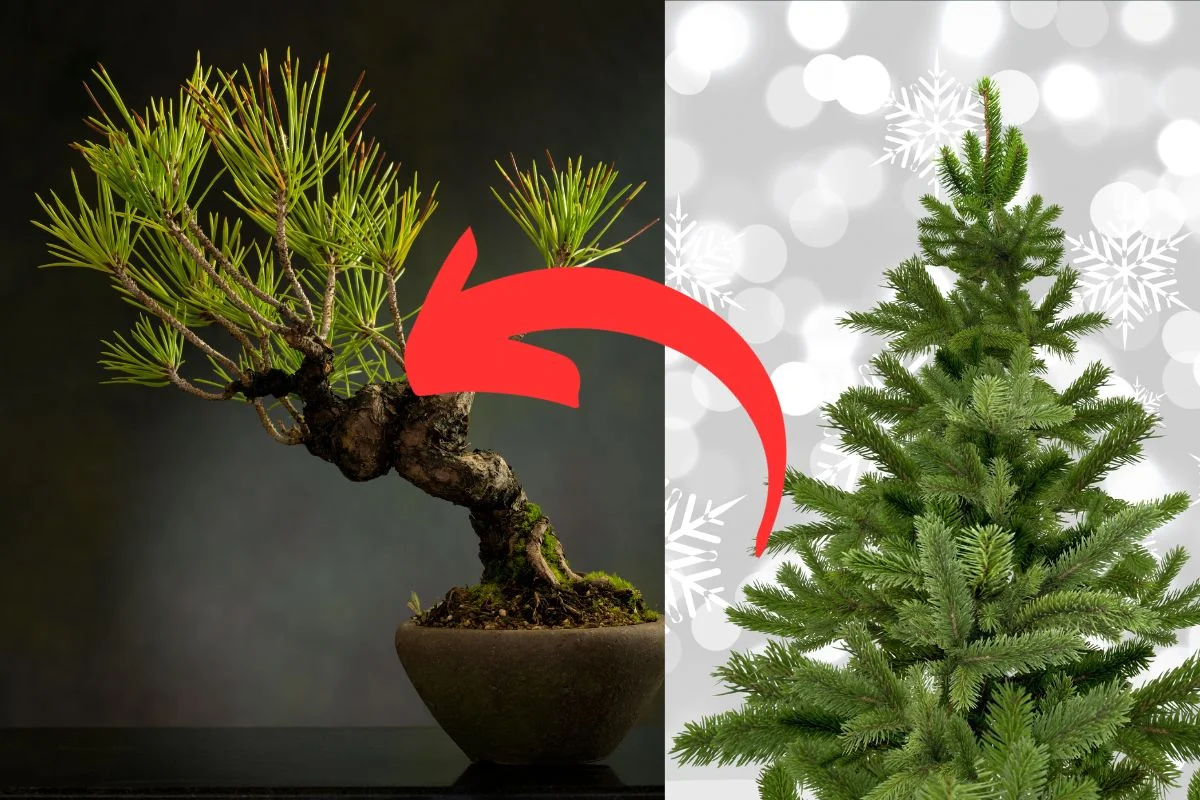Did you know that pine trees can be transformed into captivating bonsai masterpieces? If you've ever marveled at the beauty of a bonsai tree and wondered how to create one from a pine tree, you're in the right place. Bonsai artistry has been practiced for centuries, and mastering the techniques to bonsai a pine tree can be both challenging and rewarding. From selecting the right pine species to shaping and nurturing your miniature creation, we'll explore step-by-step guidance to help you embark on your own bonsai journey.
Understanding Bonsai Basics
Bonsai Origins
Bonsai, a captivating art of growing miniature trees, has a rich history that dates back over a thousand years. Originating in China, it evolved from the ancient Chinese art of "penjing," where artists created landscapes in trays. However, it was during Japan's Kamakura period that bonsai gained popularity and became synonymous with Japanese culture.
The meticulous practice of shaping and nurturing small trees allows enthusiasts to appreciate nature's beauty on a smaller scale. By understanding the origins of bonsai, one can grasp its cultural significance and the patience required to master this art form.
Pine Tree Selection
Selecting an appropriate pine tree is crucial for successful bonsai cultivation. When choosing a pine tree for bonsai purposes, opt for one with a thick trunk as it provides stability and visual appeal. Consider the tree's age and overall shape to ensure its suitability for miniaturization.
Furthermore, look for a pine tree with good taper (gradual decrease in diameter from base to apex) and nebari (a well-spread root base). These features contribute significantly to creating an aesthetically pleasing bonsai specimen.
Bonsai Styles
Exploring various bonsai styles opens up opportunities for creativity and personal expression within this art form. The formal upright style showcases strong vertical lines while the informal upright style offers more natural-looking curves. Meanwhile, the slanting style imparts dynamic movement into the design.
For those seeking more dramatic presentations, cascading or semi-cascade styles allow branches to flow gracefully downwards like those found in nature. The literati style emphasizes elegance through sparse foliage distribution along asymmetrical trunks.
Moreover, research about group planting or forest styles if interested in creating miniature landscapes featuring multiple trees within one container.
Starting Your Pine Bonsai
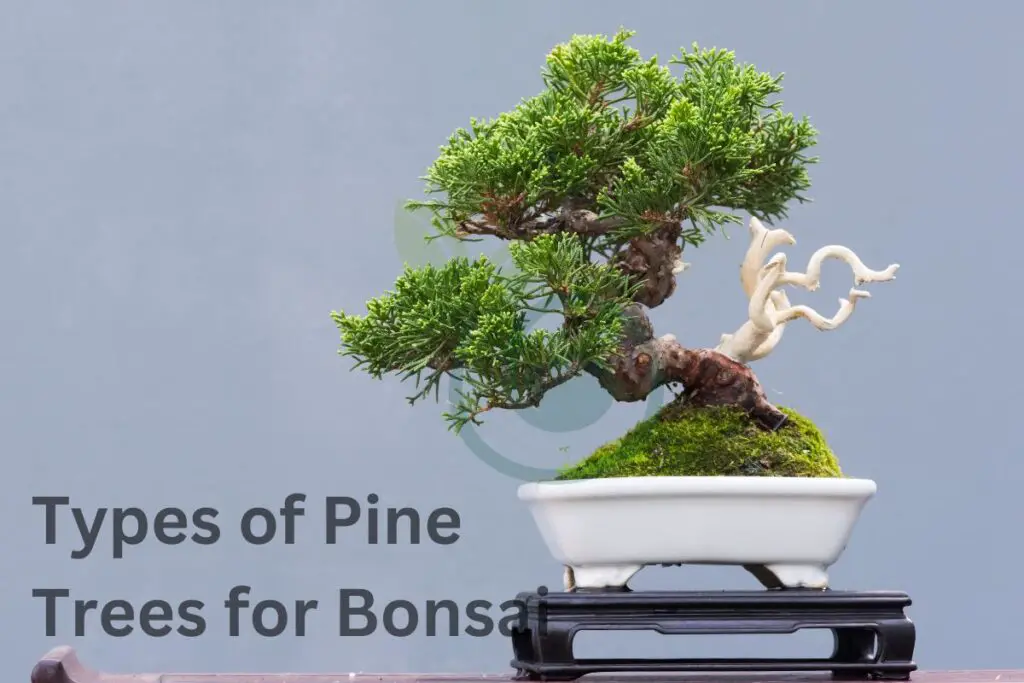
Seed Germination
To start bonsai-ing a pine tree, you'll first need to germinate the seeds. Begin by soaking the pine seeds in water for 24 hours. After soaking, plant the seeds in a well-draining soil mix. Make sure to keep the soil consistently moist during germination.
Germinating pine seeds is an essential step in creating a beautiful and healthy bonsai tree. By soaking the seeds before planting them, you are providing them with the necessary moisture to kickstart their growth process. Planting them in well-draining soil ensures that they have access to proper nutrients and oxygen while preventing waterlogging, which could lead to root rot.
After planting, make sure to maintain consistent moisture levels in the soil throughout this phase of growth. This will support healthy seedling development and increase your chances of successfully growing a beautiful pine bonsai tree.
Sapling Selection
When selecting saplings for your bonsai project, it's crucial to consider specific factors that contribute to creating an aesthetically pleasing and robust bonsai tree. Look for saplings with desirable trunk movement and taper as these characteristics are fundamental for achieving an authentic and visually appealing look.
Evaluating the root system of each sapling is vital as it directly impacts how well your pine bonsai will thrive over time. A strong and healthy root system contributes significantly to the overall health and vigor of your future bonsai tree.
Consideration should also be given to evaluate the overall health of each potential sapling carefully. Opting for vigorous and healthy saplings sets a solid foundation for successful long-term cultivation.
Selecting suitable saplings plays a pivotal role in shaping your future pine bonsai's form and aesthetics while ensuring its longevity.
Essential Bonsai Tools
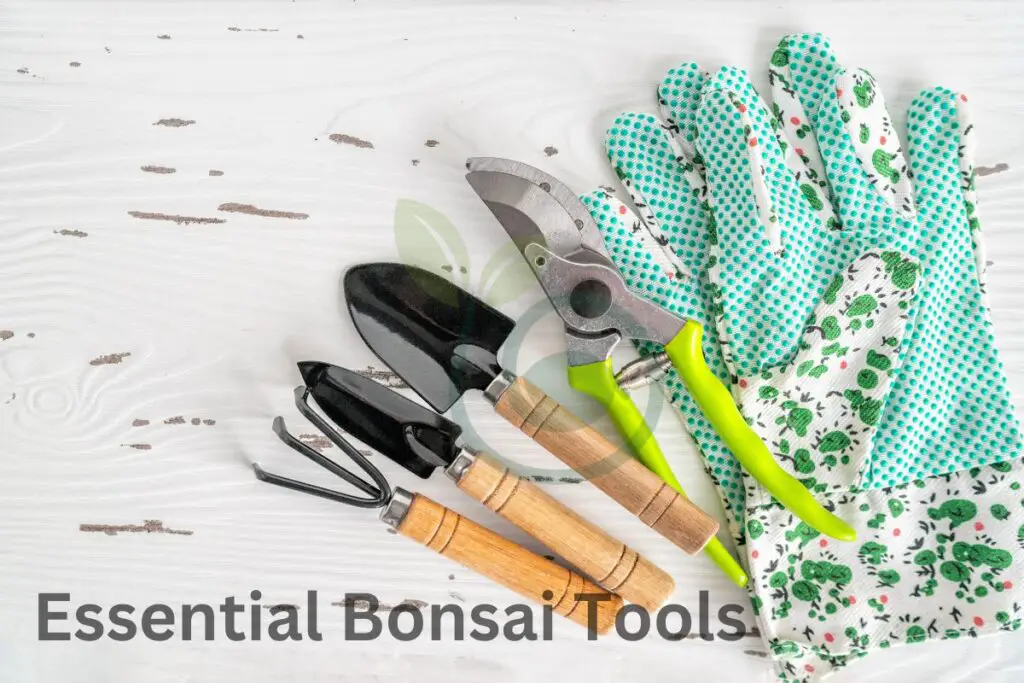
Pruning Shears
When pruning a pine bonsai tree, it's crucial to use sharp pruning shears. These shears ensure clean cuts, promoting the tree's health and growth. Regularly sterilizing the pruning shears is essential to prevent the spread of diseases among different branches. Choosing the right size shears for various pruning tasks is important. For instance, smaller shears are suitable for delicate trimming, while larger ones are ideal for thicker branches.
Using dull or rusty pruning shears can damage the branches and lead to infections in your pine bonsai tree. By investing in high-quality sharp pruning shears and maintaining them properly, you can effectively care for your pine bonsai tree.
Wire Cutters
Selecting appropriate wire cutters when shaping a pine bonsai is crucial. They should be suitable for cutting aluminum or copper bonsai wire without causing any damage to the tree's delicate branches. When removing wires from the tree, using wire cutters helps minimize harm by allowing precise and controlled removal.
Investing in quality wire cutters ensures that you have tools capable of handling intricate work on your pine bonsai tree without causing unnecessary stress or damage during shaping.
Bonsai Pots
Choosing suitable pots plays a significant role in nurturing a healthy pine bonsai. The pots should complement the overall style and size of the tree while enhancing its aesthetic appeal within its environment. Considering pot color and material is also crucial as they contribute to the visual harmony between the pot and the tree.
Ensuring proper drainage holes in your chosen pots is vital as they allow excess water to escape from around your pine bonsai's roots, preventing root rot and other moisture-related issues that may affect its health over time.
Soil and Repotting

Soil Composition
To bonsai a pine tree, it's crucial to create a well-draining soil mix. This mix should consist of components like akadama, pumice, and lava rock. These materials help in maintaining the right balance of water retention and air circulation within the soil. Pine trees have specific needsSo it's essential to adjust the mix accordingly.
The importance of soil aeration and moisture retention cannot be overstated when cultivating bonsai pine trees. Proper aeration ensures that roots receive adequate oxygen while moisture retention prevents the tree from drying out too quickly.
Repotting Process
For healthy growth and development, it is recommended to repot pine trees every 2 to 3 years. This process helps maintain the overall health of the tree by providing fresh nutrients and ensuring proper root development.
During repotting, it is crucial to handle the roots with care. Carefully remove old soil without causing damage to the delicate root system. Pruning long roots during this process can encourage new feeder root development, which contributes significantly to sustaining healthy growth in your bonsai pine tree.
Planting Your Pine Bonsai
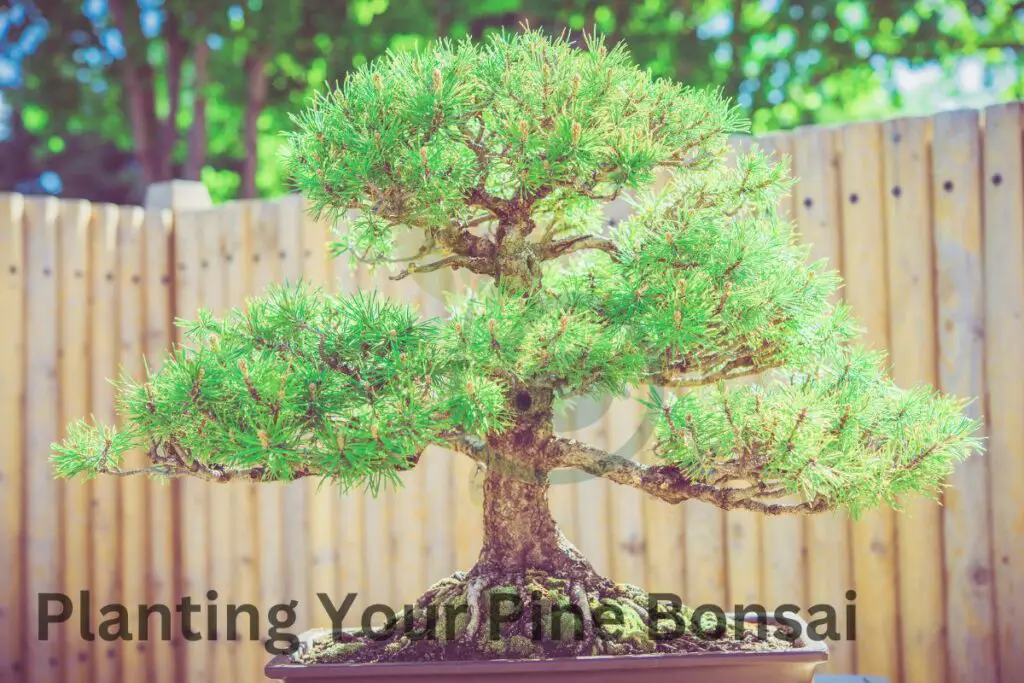
Pot Preparation
Before repotting your pine bonsai, it's crucial to ensure that the pots are clean and sterilized. Any cracks or damage in the pot can affect the tree's growth, so be sure to check for these issues before use. Preparing mesh screens at the bottom of pots is essential for proper drainage. This helps prevent waterlogging and root rot, which can harm your bonsai.
When repotting your pine bonsai tree, consider positioning it off-center within the pot for visual appeal. Angling the tree slightly towards its best front enhances its aesthetic value. Moreover, ensuring that nebari (root spread) is visible above the soil line adds a natural touch to your pine bonsai's overall look.
Growth and Care for Pine Bonsai
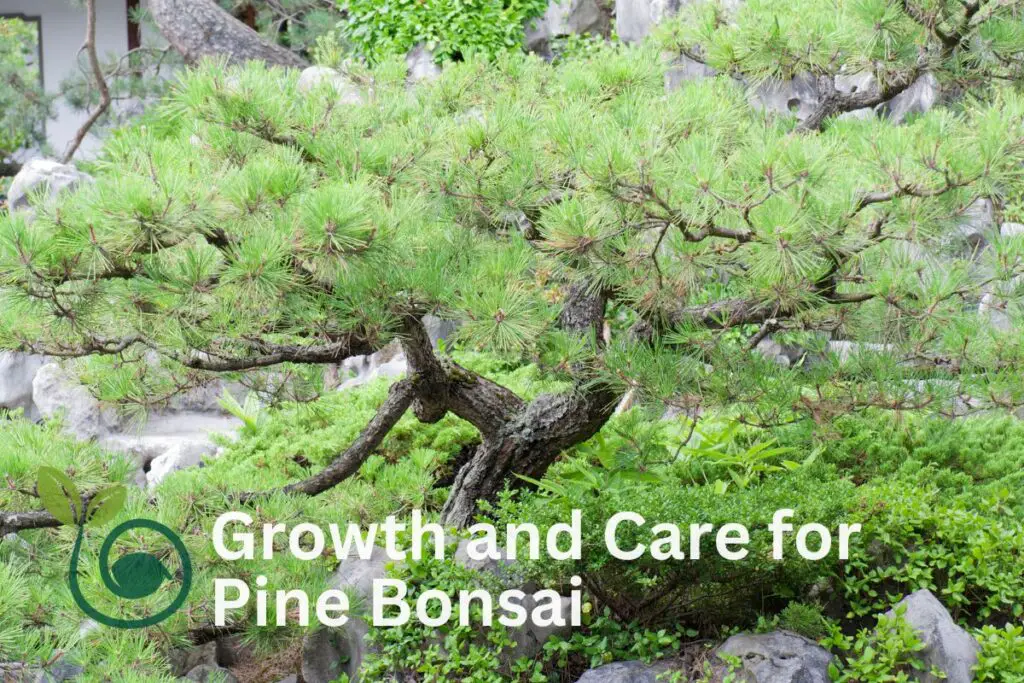
Watering Techniques
It's crucial to find the right balance. Water thoroughly, allowing the soil to dry out slightly between watering sessions. Overwatering can lead to root rot, so be cautious not to drown the roots of your pine tree. Consider the seasonal variations in watering needs; during hotter months, you may need to water more frequently.
Make sure that your bonsai pot has adequate drainage holes. This will help prevent water from pooling at the bottom and causing root rot.
Fertilizing Schedule
To ensure healthy growth for your pine bonsai, establish a consistent fertilizing schedule. From early spring through mid-fall, apply balanced fertilizer containing nitrogen, phosphorus, and potassium. However, refrain from fertilizing newly repotted trees for several weeks until they have had time to acclimate.
When using fertilizer on a large pines bonsai tree or any other variety of pine tree in a container or pot, always follow manufacturer instructions regarding application rates and frequency.
Sunlight and Placement
Adequate sunlight is essential for the overall health of your pine bonsai tree. Place it where it can receive plenty of direct sunlight throughout the day but take caution during extreme heat exposure in summer months as this could potentially harm its delicate foliage.
Keep an eye on light conditions throughout the day; if needed consider moving your plant around so that all parts receive equal amounts of sunlight over time.
Pruning Your Pine Bonsai
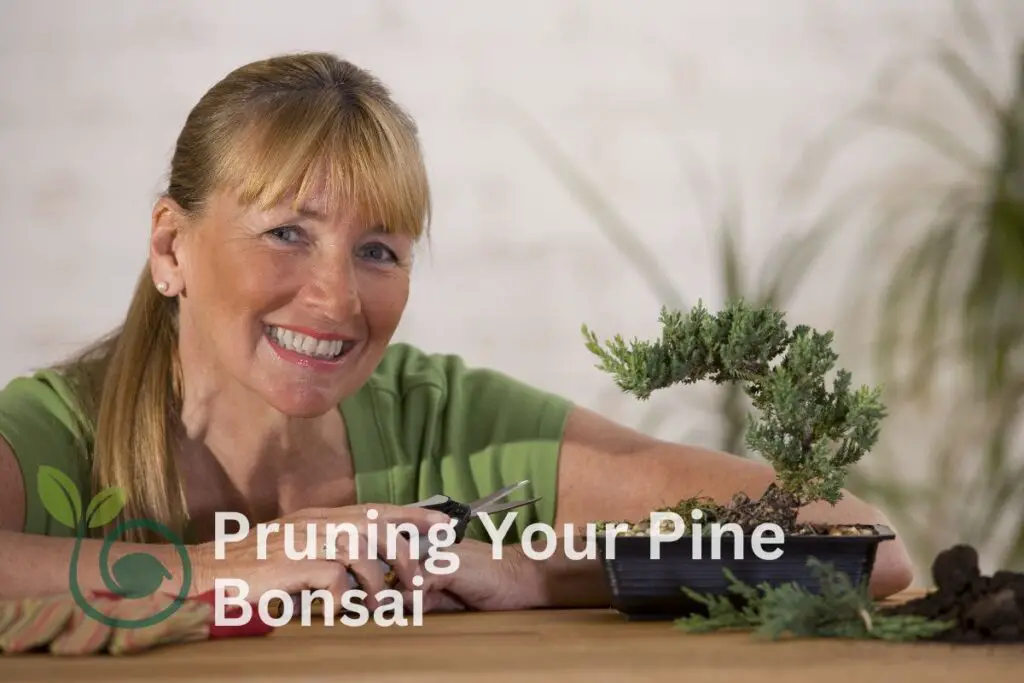
Structural Pruning
When pruning your pine bonsai, focus on shaping the primary branches. This involves eliminating competing branches to establish a clear structure. It's crucial to avoid removing too much foliage at once as this can stress the tree and hinder its growth.
For instance, if you notice two branches growing close together and competing for dominance, it's essential to prune one of them away. By doing so, you allow the remaining branch to develop more strongly without unnecessary competition.
It's important not to rush structural pruning. Take your time observing how the tree grows and develops before making any major decisions about which branches need trimming or removal.
Maintenance Pruning
In addition to structural pruning, regular maintenance pruning is necessary for keeping your pine bonsai healthy and aesthetically pleasing. You should regularly prune new shoots that appear in unwanted areas of the tree.
For example, if there are new shoots growing underneath a branch where they're not needed for shaping purposes, these should be pruned away carefully using sharp scissors or shears designed for bonsai trees.
Furthermore, clearing away unnecessary buds and needles regularly helps maintain the overall health of your pine bonsai. This process ensures that only healthy foliage remains on the tree while allowing proper airflow through its branches.
Maintaining balance between foliage pads is also critical. Foliage pads refer to groups of leaves that form distinct layers within a bonsai tree’s canopy. By ensuring these pads remain balanced in terms of size and density throughout regular maintenance pruning sessions, you help promote an even distribution of energy throughout the entire tree.
Shaping Techniques
Wiring Methods
To shape your pine bonsai, wire young branches carefully to guide their growth direction. Avoid leaving wires on too long to prevent scarring. It's crucial to monitor wired branches closely for constrictions. If you notice any, remove the wire immediately.
Wiring is a fundamental technique in shaping bonsai trees. When wiring a branch, start by anchoring one end of the wire at the base of the tree and then gently wrap it around the branch while ensuring not to apply too much pressure.
Once you've guided the branch into position with the wire, allow it time to set into place naturally before removing the wire. This process typically takes several months but ensures that your pine bonsai maintains its desired shape without causing harm or stress.
Branch Positioning
When positioning branches, use gentle bending techniques along with wiring methods to achieve your desired form. Bend lower, middle, and upper branches gently into their positions using wiring techniques mentioned earlier.
It's essential to maintain balance between lower, middle, and upper branches as this creates a visually appealing structure for your pine bonsai tree. A well-balanced tree showcases an even distribution of foliage throughout its various levels.
In addition to wiring methods and branch positioning techniques, consider utilizing specific tools designed for precise shaping such as concave cutters or knob cutters. These tools help ensure clean cuts when pruning or adjusting thicker branches which are essential in maintaining the overall characteristics of your pine bonsai tree.
Seasonal Care for Pine Bonsai
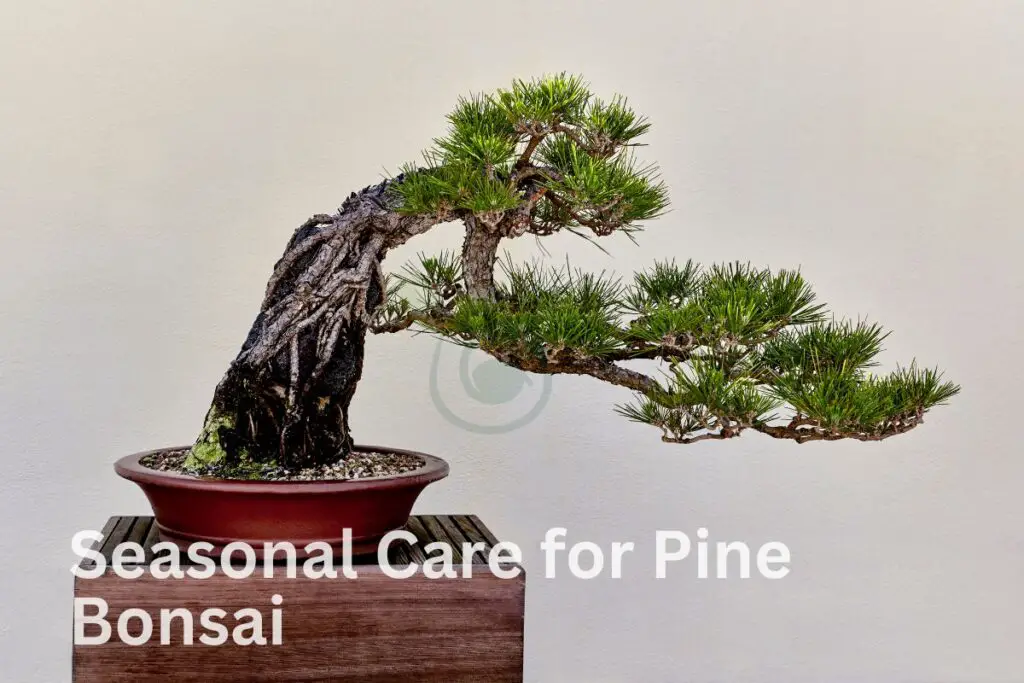
Winter Protection
During winter, it's crucial to shield pine trees from freezing temperatures. To do this, you can use protective coverings like burlap or blankets. These coverings act as insulation and protect the tree from harsh cold. It's also important to avoid excessive moisture buildup around the roots during winter. This is because frozen water can damage the roots and affect the overall health of the bonsai pine tree. Monitoring temperature fluctuations during winter months is essential for ensuring that your pine bonsai remains healthy.
When protecting your pine bonsai in winter, consider using materials like straw or mulch to insulate its roots against extreme cold temperatures. By doing so, you provide a buffer that helps maintain a stable root environment despite fluctuating outdoor temperatures.
Summer Maintenance
In summer, regular pest checks are vital for maintaining pine bonsai trees' health. Pests such as spider mites and aphids can cause significant damage if left unchecked. You should inspect your tree regularly for any signs of infestation and take appropriate measures if pests are detected.
Consistent watering routines are crucial during hot summer months to prevent dehydration and stress on the pine bonsai tree. Proper watering involves keeping the soil consistently moist but not waterlogged; this ensures that your tree stays healthy throughout the warmer season.
Extreme heat conditions can be detrimental to pine bonsais; therefore, providing shade is essential when temperatures soar during summer months. You can use shade cloth or move your potted pine bonsai to a location with indirect sunlight to protect it from scorching heat.
Advanced Bonsai Techniques
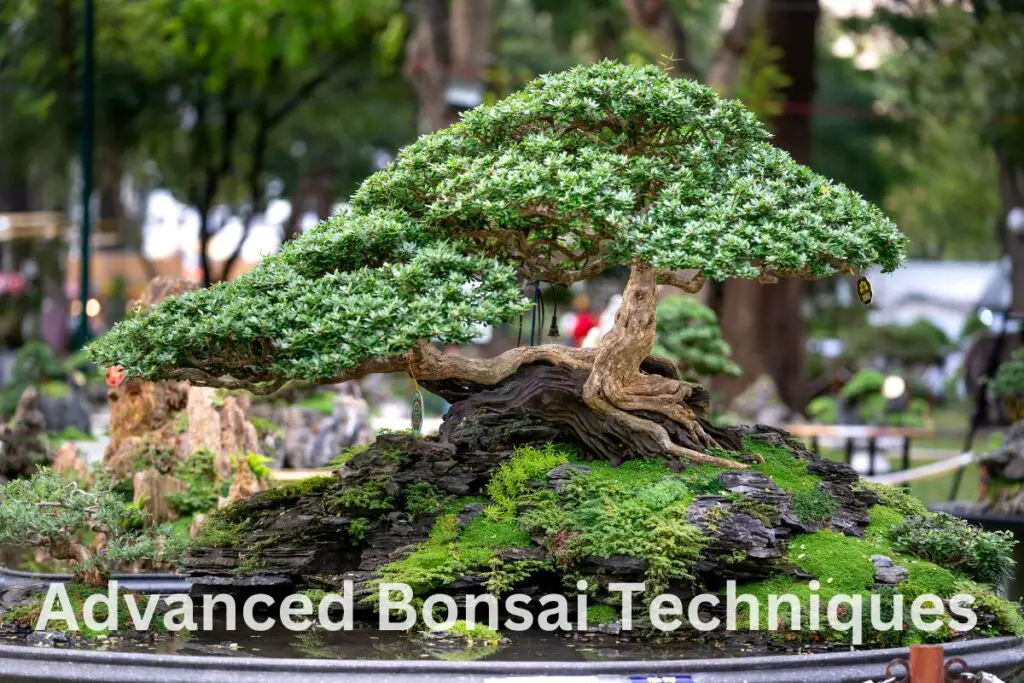
Grafting Methods
Grafting is a crucial technique for bonsai enthusiasts looking to create unique pine tree variations. Approach grafting involves attaching a shoot from one tree onto another, while thread grafting uses a small branch threaded through the trunk. To perform these techniques successfully, gather essential tools such as a grafting knife and sealant. These tools help ensure clean cuts and protect the grafted area from infections.
When attempting approach or thread grafting on pine trees, it's vital to take precautions to prevent infection during the process. Sterilize your tools before use and keep the grafted area clean and protected with appropriate sealants. By mastering these grafting methods, beginners can expand their bonsai skills and create stunning variations of pine trees.
Jin and Shari
Creating jin involves stripping bark from deadwood areas of bonsai trees to mimic natural weathered effects. On the other hand, shari refers to creating deadwood on bonsai trunks by carefully removing bark in artistic patterns. Knowing when to apply jin and shari techniques is essential for achieving an authentic appearance in your pine tree bonsai.
For beginners eager to delve into advanced bonsai techniques, understanding how to create jin and shari can elevate their creations significantly. These techniques add character, age, and visual interest to the overall design of pine tree bonsais.
Final Remarks
Congratulations on completing the essential sections for cultivating a thriving pine bonsai! You've gained valuable insights into the art of bonsai, from understanding the basics to mastering advanced techniques. Now, armed with this knowledge, it's time to get your hands dirty and bring your pine bonsai to life.
So, grab your tools and let your creativity flow! Don't be afraid to experiment and learn from the unique journey of each bonsai. Remember, patience is key – just like nurturing a bonsai, great things take time. Embrace the process, enjoy every snip and trim, and watch your pine bonsai flourish into a masterpiece.
Now, go on and embark on this rewarding adventure. Your pine bonsai awaits your skillful touch!
Frequently Asked Questions
How long does it take to bonsai a pine tree?
Bonsai is a patient art form. It takes several years to develop a mature-looking pine bonsai. The time required depends on factors like the initial size of the tree, its species, and your desired outcome.
What are the essential tools for starting a pine bonsai?
To begin your pine bonsai journey, you'll need basic tools such as pruning shears, concave cutters, wire cutters, and branch benders. These tools will help you shape and maintain your pine bonsai as it grows.
When is the best time to repot my pine bonsai?
The ideal time to repot your pine bonsai is during early spring before new growth appears. This allows the roots to recover quickly from any disturbance and promotes healthy development throughout the growing season.
How often should I water my pine bonsai?
Pine trees prefer slightly drier conditions compared to other types of trees. As a general rule of thumb, check the soil moisture every day in summer and every few days in winter. Water thoroughly when the topsoil feels dry.
What are some advanced techniques for shaping a mature pine bonsai?
Advanced shaping techniques for mature pine bonsais include jin (deadwood) creation, shari (natural trunk carving), and intricate wiring methods for refining branch structure. These techniques require expertise and careful consideration of the tree's health and aesthetic balance.
Image Source: Paid image from CANVA

